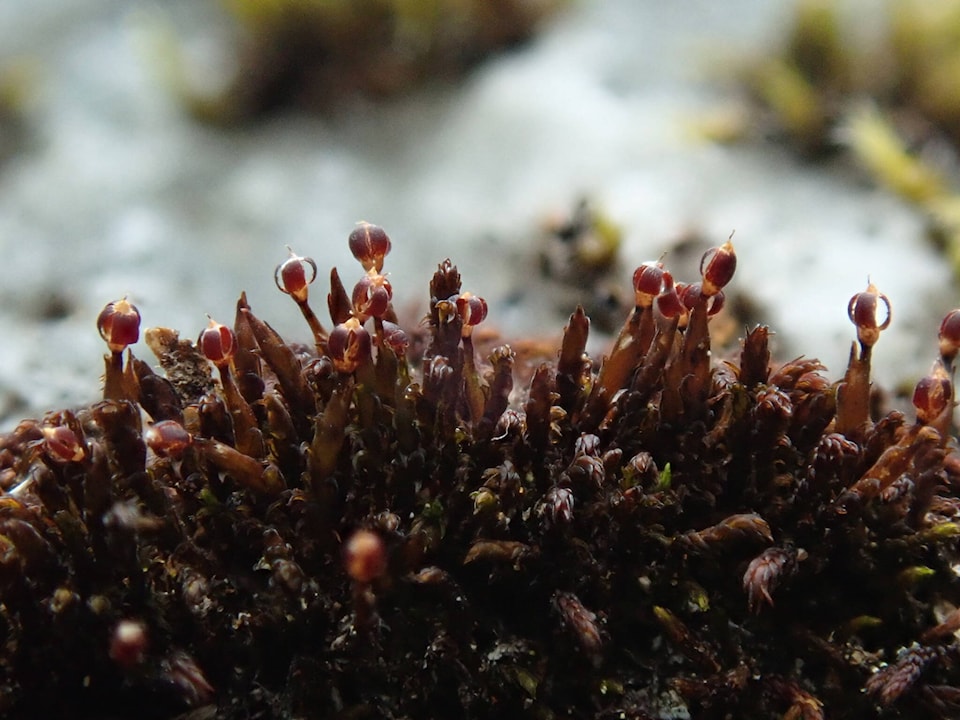While they may seem to fade into the background when compared to other magnificent features like snow-capped peaks and lakeside vistas of Strathcona Park, mosses and liverworts are a whole hidden world of biodiversity right below hikers’ feet.
That’s why Randal Mindell and Dan Tucker put together a new edition of their Mosses and Liverworts of Strathcona Provincial Park field guide.
“In this field guide, probably about three quarters of the species are things you would see within a three hour walk on the easy trails in the park,” Mindell said. “It gives you a bit of a theme (for your hike). You can turn it into kind of a scavenger hunt that can open your eyes to mosses and liverworts as a whole: these tiny little plants that are easy to overlook.”
Using data from their own observations and the iNaturalist citizen science app, over 200 species of mosses and over 100 species of Liverworts have been catalogued in the park. Mindell and Tucker spent the last four summers documenting these species. Mindell said that one quarter of the species in the province can be found within the boundaries of Strathcona Park, and they have not come close to exploring the whole area.
“It’s really hard to get to some parts of the park,” Mindell said. “We’ve done everything thus far with just field observations and getting park research permits that allow us to penetrate further and collect more can sometimes be prohibitive… You get the lakeshores, the rivers, the sub-alpine, the alpine, and we haven’t even hit the other end of the park where it’s more maritime-influenced. More than a quarter of the species in B.C., we’ve found so far in the park. I’m sure we’d kick up more if we could access more of the park.”
Over the course of their study, Mindell said he was most surprised by the sheer diversity of different species in the park. That applies to more than just mosses and liverworts too.
“Many of the things that we saw as we surveyed the park were things that had never been recorded in the park or sometimes in Vancouver Island,” he said. “There’s a lot of biodiversity in that park that we still don’t really know about, and it’s kind of exciting to explore and find those things at a cryptic level.”
To Mindell, the appeal of the little organisms is how representative they are of larger, more complicated plants and animals. Though some of them are only active six months of the year, he said they are “a microcosm of all the reasons we’re attracted to things like polar bears or giant trees. The exact same processes are happening there, but they’re happening at a very small scale.”
“They show all the features of bigger things: evolutionary patterns, ornate or intricate structural diversity and adaptations, interesting ecology. They live very marginal existences in some places. The ones up in the park are only kind of exposed for around six months of the year. For the other six months, they’re under snow beds.”
The book is available for order by emailing strathconawilderness@gmail.com, and will be available at the Strathcona Wilderness Centre in the summer.
RELATED: Two mossy events coming to Cortes Island in November
